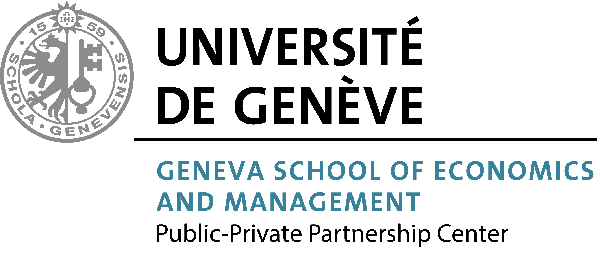Moira's paper, co-authored in an international collaboration with Dr Jordan Tchilingirian of University of Bath was entitled: Governing cross-sector partnerships: how governance boards structure multi-stakeholder collaboration.
Abstract
Increasing
attention is paid to the contribution of organization scholarship to tackling
the “grand challenges” of the 21st century. The 17 Sustainable
Development Goals (or SDGs) adopted in 2015 are an articulation of these
significant issues. In the SDGs and ‘Agenda 2030’, cross-sector partnerships
were given new impetus. These inclusive partnerships require ‘bringing together
Governments, civil society, the private sector, the United Nations system and
other actors’ (UN: General Assembly, 2015), and are assumed to be “built upon principles and values, a shared
vision, and shared goals that place people and the planet at the centre, [and]
are needed at the global, regional, national and local level” (UN: United Nations, 2015). Rhetorically this ambition may be justified: cross-sectoral
partnerships have the potential to be significant new crucibles in which
sustainable development solutions will be forged. Yet it is not rigorous to
assume that development goals are shared among diverse partners, much less the
principles underpinning them or the practices that different stakeholders will
assume to be appropriate to achieving them. In this multiplicity of goals,
frames and actions, the ways in which such partnerships are established and
governed will impact more or less positively on both the quality of
collaboration inside the partnerships and ultimately, on achieving sustainable
development for all.
Changing practices
of cooperation and collaboration at global, regional, national and local levels
require the consideration of partnership as a new and different phenomenon. Thus,
analysis is required in order to move beyond partnership remaining no more than
“a ‘feel good’ panacea for governance without a pragmatic grasp of what it is
and how it differs from business as usual” (Brinkerhoff, 2002, p. 20). Nevertheless, nor should such analysis simply dismiss partnerships
as ‘business as usual’ under the same master as always (Utting & Zammit, 2009). In the absence of such research, we are left with an inadequate
analysis that creates the conditions for ill-informed policy decisions and the
perpetuation of extant power hierarchies.
Much existing
literature treats partnerships as either normatively appropriate or
instrumentally useful organisational models (Faul, 2016). However, partnerships are more than a novel organisational form,
therefore the authors argue that existing theorisations of partnerships as
organisations can usefully be supplemented by Eyal's (2011) theorisation of ‘spaces between fields’. To bring these blurry and
ambiguous spaces between fields into sharper focus, the authors examine the
actual relationships between partnership board members that structure this
partnership space between fields. Partnership governance boards are at the
sharp end of partnering activities, bringing together partners representing
diverse countries, organisations, and professional expertise. Thus, we extend
existing analyses to consider the ways in which actors from these different
sectors are formally brought together in multistakeholder partnership boards to
address a development problem.
To examine these
emerging partnership spaces as they institutionalise, we ask: What are the
partnering processes that connect diverse partners from established fields? Therefore,
this paper examines the practices of partnering across the boards of ten global
partnerships established to provide financing for four social and environmental
SDGs (including SDG2: nutrition, SDG13: climate change, SDG4: education, and
SDG3: health), and considers the contribution of Eyal’s theory of spaces
between fields to cross-sector partnership research.
Drawing on an
original dataset of 200 board members from10 global financing partnerships for
the Sustainable Development Goals, the authors used network analysis to reveal
the actual relationships that are designed into the boards of new
cross-sectoral governance arrangements. The context of partnership Boards
is particularly suitable for studying the partnering processes of individuals
across institutionalised fields, since Board relationships are generally
established with the explicit goal of creating relationships between partners
from diverse fields. Thus, it is board relationships that create and structure
the spaces into which multiple professions, organisations, logics, and
institutions are mobilised, representing an important setting in which cross-sectoral
partnering occurs.
This analysis
revealed that (a) partnership boards for financing the SDGs are not equally
diverse; (b) different stakeholders are differently included in partnership
boards; and (c) certain stakeholders are systematically over-represented. Thus,
Board members representing donors (whether state, private or international
organisations) were more connected within the partnership space than other
stakeholders (recipient states and civil society). This would indicate the
importance of historical relations of power and the privileging of certain logics
and practices in the emerging institutionalisation of global financing partnerships
for the SDGs.
This paper contributes an innovative theoretical framing to studies of partnerships and extends the insights of Eyal’s approach. By focussing on the actual relationships that sustain and structure spaces between fields, the authors demonstrate how initial conditions and power disparities in constituent fields are translated and imprinted into emergent liminal partnership spaces. This insight is important in theorizing the governance of cross-sector partnerships; it implications for enhancing the effectiveness of multi-stakeholder partnerships for sustainable development are also critical.
Paper available on request from moira.faul[at]unige.ch
